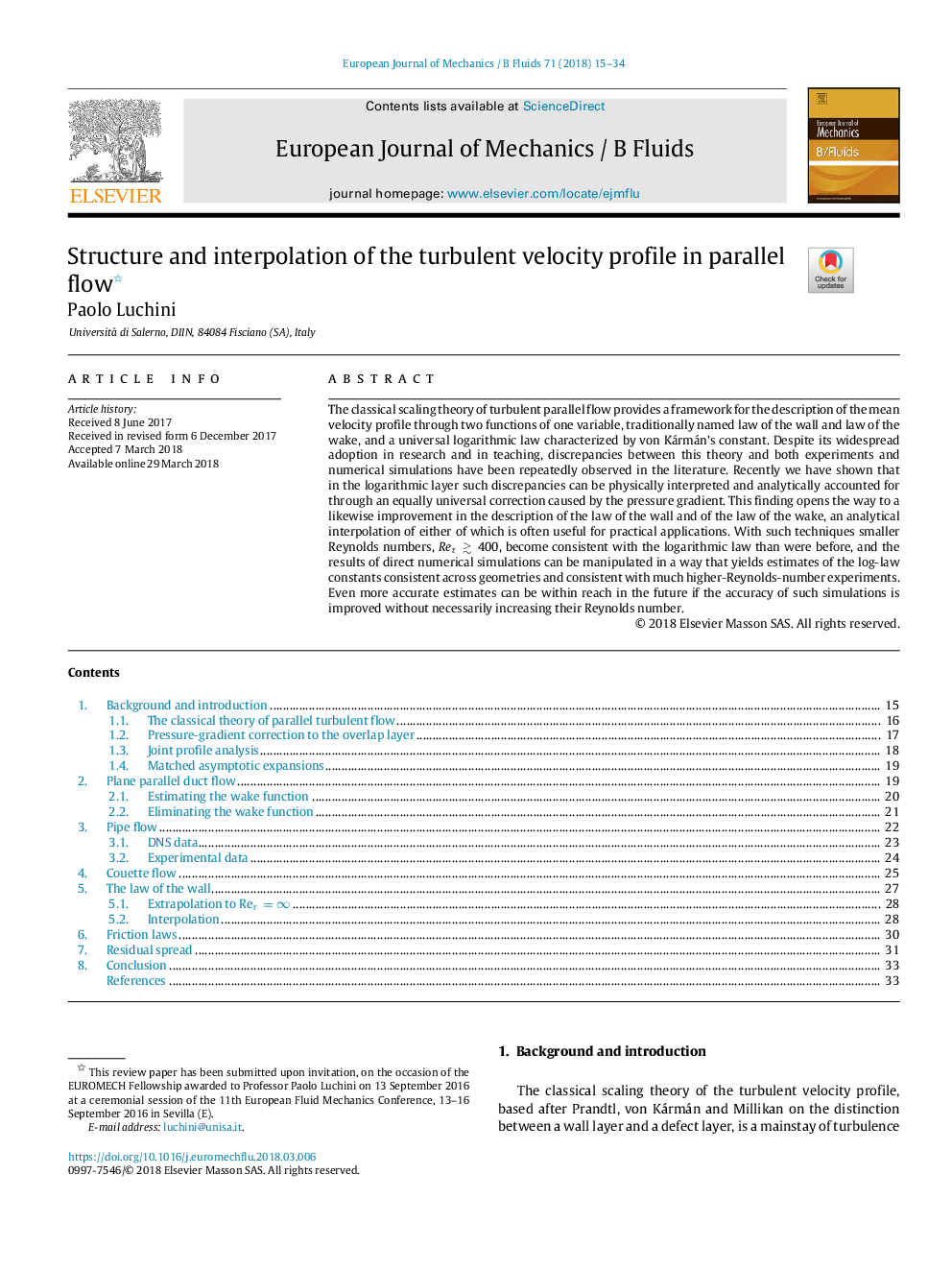| Article ID | Journal | Published Year | Pages | File Type |
|---|---|---|---|---|
| 7050903 | European Journal of Mechanics - B/Fluids | 2018 | 20 Pages |
Abstract
The classical scaling theory of turbulent parallel flow provides a framework for the description of the mean velocity profile through two functions of one variable, traditionally named law of the wall and law of the wake, and a universal logarithmic law characterized by von Kármán's constant. Despite its widespread adoption in research and in teaching, discrepancies between this theory and both experiments and numerical simulations have been repeatedly observed in the literature. Recently we have shown that in the logarithmic layer such discrepancies can be physically interpreted and analytically accounted for through an equally universal correction caused by the pressure gradient. This finding opens the way to a likewise improvement in the description of the law of the wall and of the law of the wake, an analytical interpolation of either of which is often useful for practical applications. With such techniques smaller Reynolds numbers, ReÏâ³400, become consistent with the logarithmic law than were before, and the results of direct numerical simulations can be manipulated in a way that yields estimates of the log-law constants consistent across geometries and consistent with much higher-Reynolds-number experiments. Even more accurate estimates can be within reach in the future if the accuracy of such simulations is improved without necessarily increasing their Reynolds number.
Related Topics
Physical Sciences and Engineering
Chemical Engineering
Fluid Flow and Transfer Processes
Authors
Paolo Luchini,
